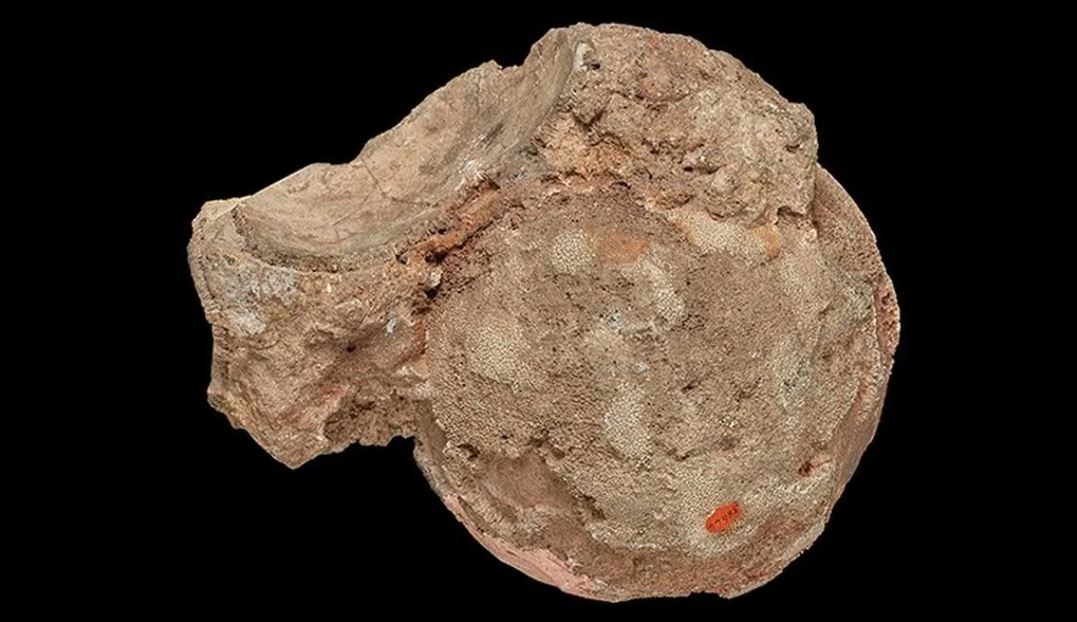Rock Crystal Found To Be A Dinosaur Egg After Nearly Two Centuries
Rock crystal found to be a dinosaur egg after nearly two centuries. The seemingly unremarkable agate that had been cataloged as a decorative crystal gemstone in 1883 was discovered in central India and is almost perfectly spherical, measuring around 6 inches in diameter and possessing a light pink color.
Author:Daniel JamesReviewer:Karan EmeryApr 02, 202327.4K Shares702.7K Views

Rock crystal found to be a dinosaur egg after nearly two centuries. The seemingly unremarkable agate that had been cataloged as a decorative crystal gemstone in 1883 was discovered in central India and is almost perfectly spherical, measuring around 6 inches in diameter and possessing a light pink color. Although it was beautiful, the stone was not considered to be of much significance until recently.
The discovery of the egg began when Robin Hansen, one of the curators of the mineralogy collection at the Natural History Museum in London, visited a mineral show in France in 2018. There, a dealer showed Hansen an agatized dinosaur egg that was spherical, with a thin rind and dark agate in the middle.
Hansen immediately recognized that it looked similar to the agate on display at the museum. After consulting with paleontologists, it was agreed that the agate was the right size and shape to be an egg, with the stone showing evidence of having been pressed against other spherical rocks, just like a clutch of eggs in a nest.
Upon closer examination, researchers discovered that the agate was lined by a thin white layer, which was likely an eggshell. The egg was first collected by Charles Fraser sometime between 1817 and 1843 while he was living in India. The age of the egg and where it was found suggest that it belonged to a titanosaur, the largest dinosaur to ever walk the Earth, which lived from 163.5 million years ago until around 66 million years ago.
According to the museum, the egg may have even been collected before the word 'dinosaur' existed, as the term was not defined until 1842. This means that the egg could be the first dinosaur egg ever found, and no one knew it at the time.
Titanosaurs were massive animals that could grow up to 85 feet tall, making them the largest terrestrial animal ever known. Despite their size, their eggs were surprisingly small, with the agate from India measuring only a few inches in length. Paleontologists believe that titanosauruses laid large clutches of about 30 or 40 smallish eggs, a trade-off that many living animals use.
The discovery of the dinosaur egg also shed light on the behavior of these ancient creatures. Paleontologists believe that dinosaurs regularly returned to volcanic regions to lay their eggs because it was warm.
This would help explain how the egg agate formed. It's possible that shortly after a titanosaur laid its eggs in the warm sands, a nearby volcano erupted. The volcanic rock would have covered the dinosaur nest, solidifying and leaving the egg intake within the stone. The embryo would have rotted away, and the water, which was full of silica, would have filled the space, eventually solidifying into the beautiful pink stone seen today.
Conclusion
The egg is now on display at the Natural History Museum in London as part of the “Titanosaur: Life as the Biggest Dinosaur” exhibit. The discovery of this dinosaur egg highlights the ongoing importance of scientific research and discovery, even from objects that may have been long considered unremarkable.
Jump to

Daniel James
Author
Daniel James is a distinguished gerontologist, author, and professional coach known for his expertise in health and aging.
With degrees from Georgia Tech and UCLA, including a diploma in gerontology from the University of Boston, Daniel brings over 15 years of experience to his work.
His credentials also include a Professional Coaching Certification, enhancing his credibility in personal development and well-being.
In his free time, Daniel is an avid runner and tennis player, passionate about fitness, wellness, and staying active.
His commitment to improving lives through health education and coaching reflects his passion and dedication in both professional and personal endeavors.

Karan Emery
Reviewer
Karan Emery, an accomplished researcher and leader in health sciences, biotechnology, and pharmaceuticals, brings over two decades of experience to the table. Holding a Ph.D. in Pharmaceutical Sciences from Stanford University, Karan's credentials underscore her authority in the field.
With a track record of groundbreaking research and numerous peer-reviewed publications in prestigious journals, Karan's expertise is widely recognized in the scientific community.
Her writing style is characterized by its clarity and meticulous attention to detail, making complex scientific concepts accessible to a broad audience. Apart from her professional endeavors, Karan enjoys cooking, learning about different cultures and languages, watching documentaries, and visiting historical landmarks.
Committed to advancing knowledge and improving health outcomes, Karan Emery continues to make significant contributions to the fields of health, biotechnology, and pharmaceuticals.
Latest Articles
Popular Articles
